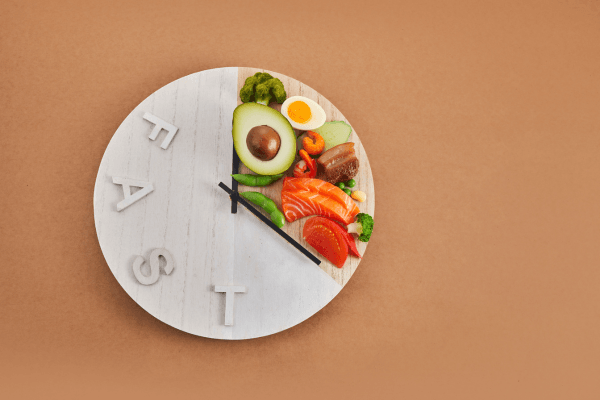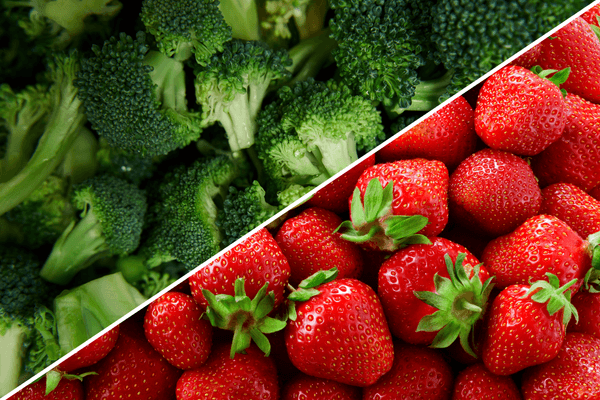Almost everybody has experienced the phenomenon where they eat a nutritious dinner and feel full all the way through. And yet, suddenly, moments later, you find yourself with enough space and hunger for a delicious dessert.
Children have the amazing capacity to eat dessert regardless of how full they feel. Even kids who are usually too full to think about eating another mouthful of broccoli or fish can easily devour a bowl of ice cream.
According to Henry Ford Health registered dietitian nutritionist Allegra Picano, RDN, “This idea of having a ‘dessert stomach’ is very real.” It is not a literal second stomach, of course. But Picano notes that following a savoury meal, “introducing a new food—especially something sweet—can override satiety cues and make you feel hungry again.”
What is sensory-specific satiety?
Sensory-specific satiety (SSS) is a fascinating phenomenon that significantly impacts our eating behaviour. It refers to the decline in pleasure derived from consuming a specific food as we continue to eat it. This stands in stark contrast to general satiety, the overall feeling of fullness that arises from eating any food.
Imagine savouring a plate of your favourite dessert. The first bite is pure delight, a symphony of flavour and texture. However, with each subsequent bite, the enjoyment gradually fades. This is SSS in action. Your taste receptors, initially excited by the novel sensations, become accustomed to the constant stimulation, leading to a decreased perception of pleasure.
This phenomenon is attributed to several possible mechanisms:
1. Receptor adaptation: As you continuously consume a specific food, your taste receptors adapt to its unique flavour profile. This adaptation reduces their sensitivity, resulting in a diminished perception of pleasure. Think of it like wearing sunglasses on a bright day; your eyes initially squint, but eventually adjust to the light, making it seem less intense.
2. Sensory fatigue: Constant exposure to the same flavours and textures can lead to sensory fatigue. This fatigue, similar to how your muscles tire after prolonged exertion, temporarily reduces the responsiveness of your taste receptors, making the food seem less appealing.
3. Post-ingestive effects: The digestion process itself can play a role in sensory-specific satiety. Certain foods, upon digestion, release chemicals that signal the brain to stop eating that particular food. This internal feedback loop further contributes to the decline in pleasure associated with continued consumption.
While the exact mechanisms behind sensory-specific satiety are still under investigation, its impact is undeniable. This phenomenon encourages us to diversify our diets, seeking new flavours and textures to maintain our sense of enjoyment. It explains why we often crave variety and why a seemingly full stomach can still accommodate a different type of food.
It is important to remember that sensory-specific satiety is specific to each individual food. Enjoying a plate of cookies will not diminish the pleasure derived from a subsequent scoop of ice cream. Additionally, the effect of sensory-specific satiety is temporary. Taking a break from a particular food allows your taste receptors to recover, and the pleasure will eventually return.
Ultimately, understanding sensory-specific satiety helps us appreciate the complex interplay between our senses and our eating behaviour. It demonstrates how our perception of food is not solely determined by taste, but also by our sensory history and internal feedback mechanisms.
A precise taste, texture or combination of foods can make you feel full, or satiated, according to the concept of sensory-specific satiety. According to Picano, “Chemicals like dopamine stimulate the brain’s reward centre and make eating pleasurable.” You feel satisfied since after a while, the same taste becomes less enjoyable. But your brain wants you to try new things and give its reward centre a fresh shock whenever a new sensory stimulation appears, especially if it contains sweets.
This idea may be used as a justification for overindulging in dessert when we are already full, yet it actually has an evolutionary function. According to Picano, “Our ancestors were forced to eat a variety of foods because of the sensory-specific satiety mechanism.” “It made sure they got a range of nutrients to keep them healthy.”
Why eating a variety of foods matter?
It is crucial to eat a range of foods from each food group for a number of reasons.
1. Getting the nutrients you need: Different foods provide different nutrients, so it is important to eat a variety to get all the nutrients your body needs to stay healthy. These nutrients include:
- Carbohydrates: provide energy for your body.
- Proteins: help build and repair tissues.
- Fats: are essential for storing energy, cushioning organs, and absorbing vitamins.
- Vitamins and minerals: help regulate bodily functions and keep you healthy.
2. Reducing your risk of chronic diseases: Eating a variety of fruits, vegetables, and whole grains can help reduce your risk of chronic diseases such as heart disease, stroke, type 2 diabetes, and some types of cancer.
3. Keeping your gut healthy: Eating a variety of foods helps to promote a healthy gut microbiome, which is important for digestion and overall health.
4. Making your diet more interesting: Eating a variety of foods can help to make your diet more interesting and enjoyable. This can help you to stick to your diet in the long term.
5. Helping you reach and maintain a healthy weight: Eating a variety of nutrient-rich foods can help you feel full and satisfied, which can help you to reach and maintain a healthy weight.
Here are some tips for eating a variety of foods:
- Eat fruits and vegetables at every meal and snack.
- Choose whole grains over refined grains.
- Eat lean protein sources, such as fish, beans, and poultry.
- Limit unhealthy fats, processed foods, and added sugar.
- Cook more meals at home so you can control the ingredients.
Eating a variety of foods is a simple but important way to improve your health and well-being. By following the tips above, you can make sure you are getting all the nutrients your body needs to stay healthy
As it happens, our prehistoric forefathers were correct. Consuming a diverse range of foods not only stimulates your palate but also maintains your health. You are consuming a variety of meals when you pile your dinner plate high with different flavours. More diversity gives you more nutrition and fulfils your senses. Dietary win-wins occur here.
Because of this, experts suggest “eating the rainbow” of produce instead of limiting oneself to a small number of fruits and vegetables for each meal.
How can you indulge your sweet tooth healthily?
Here are some tips on how to satisfy your sweet tooth in a healthy way:
1. Focus on whole fruits: Fruits are naturally sweet and packed with nutrients, making them a great way to satisfy your sweet tooth without overdoing it on sugar. Try fresh fruits like berries, grapes, mangoes, or pineapples. You can also freeze grapes or bananas for a refreshing and sweet treat.
2. Opt for natural sweeteners: When you need a little extra sweetness, try using natural sweeteners like honey, maple syrup, or dates instead of refined sugar. These options have a lower glycemic index, meaning they will not cause your blood sugar to spike as quickly as refined sugar.
3. Make healthy swaps: There are many ways to make your favourite sweet treats healthier. For example, you can use apple sauce or mashed bananas in place of oil or butter in baking, or you can make your own yoghurt parfaits with fresh fruit and granola instead of sugary cereals.
4. Choose dark chocolate: Dark chocolate is a good source of antioxidants and can help satisfy your sweet tooth without a lot of sugar. Look for dark chocolate with at least 70% cacao for the most health benefits.
5. Portion control: Even healthy sweets can be unhealthy if you eat too much of them. Be mindful of your portion sizes and enjoy your treats in moderation.
6. Drink plenty of water: Sometimes, when you think you are craving something sweet, you are actually just thirsty. Drinking a glass of water can help to quench your thirst and make your sweet tooth go away.
7. Get active: Exercise can help to reduce your cravings for sugar and improve your overall mood. On most days of the week, try to get in at least 30 minutes of moderate-intensity exercise.
8. Be patient: It may take some time to adjust to eating less sugar. Don’t get discouraged if you have occasional cravings. Just keep practising and eventually, you will find that you are able to satisfy your sweet tooth in healthy ways.
Here are a few more pointers that you might find useful:
- Plan your meals and snacks in advance. This will help you to make sure that you have healthy options on hand when you are craving something sweet.
- Don’t keep sugary treats in the house. You won’t be as likely to eat them if they are not available.
- Find healthy substitutes for your favourite sweets. There are many healthy recipes available online or in cookbooks.
- Talk to a registered dietitian or nutritionist. They can help you to create a personalised plan for eating a healthy diet that satisfies your sweet tooth.
Remember, the key to satisfying your sweet tooth in a healthy way is to focus on whole, unprocessed foods and to enjoy them in moderation.
Accepting sensory-specific satiety in moderation is one method to deal with it. “Take a small serving if you always want something sweet after dinner,” advises Picano.“Just enough to satiate the need for change in your taste buds.”
Additionally, Picano advises swapping your post-dinner sweet desire with something healthier than a conventional dessert. Nutrient-dense foods like fresh fruit, a tiny dark chocolate square, or some almonds with dried fruit can satisfy your cravings for sweetness while also giving your body the nutrition it needs.
The mysterious expansion of the stomach: Unravelling the sugar connection
The ability to enjoy a delicious dessert after a seemingly full meal is a peculiar human experience. While the exact mechanism behind this phenomenon remains under investigation, several theories attempt to explain the stomach’s apparent expansion when sugar is consumed.
Hormonal changes: Sugar triggers the release of hormones like insulin and glucagon, which play a crucial role in blood sugar regulation. These hormones could indirectly influence the stomach’s relaxation and receptivity to additional food.
Sweet acts as a water magnet: Sugar, a highly soluble molecule, attracts water molecules into the stomach. This influx of water increases the overall volume of stomach contents, potentially leading to a feeling of fullness.
Stretching limits: As the sugar solution fills the stomach, it stretches the stomach wall. This stretching stimulates specialised receptors, sending signals to the brain indicating fullness. However, the precise role of these receptors in regulating satiety after sugar consumption requires further exploration.
Individual differences: It is important to remember that the human body is complex and diverse. The degree to which the stomach expands in response to sugar can vary significantly between individuals, influenced by factors like genetics, body composition, and dietary habits.
Long term consequences: While the short-term effects of sugar on the stomach are intriguing, it is crucial to consider the long-term consequences of excessive sugar intake. Overconsumption of sugar is linked to a multitude of health concerns, including obesity, diabetes, and heart disease.
Maintaining a balanced diet rich in fruits, vegetables, whole grains, and lean protein remains paramount for optimal health. Enjoying occasional sweet treats is perfectly acceptable, but mindful consumption and awareness of potential health risks are key.
Dessert stomach and healthy Eating
Dessert stomach is a real phenomenon, but it is important to remember that it is not a physical excuse to overeat. It is a complex interplay of factors that can influence our perception of fullness and desire for sweet treats.
While enjoying dessert can be part of a balanced diet, it is important to do so mindfully and prioritise overall healthy eating habits. By listening to your body’s hunger and fullness cues, choosing nutritious foods most of the time, and enjoying smaller portions of desserts, you can maintain a healthy relationship with food.
Here are some key takeaways:
- Satiety signals differ: Different types of food trigger different satiety signals in the brain. Desserts often trigger different signals than savoury foods, leading to the “dessert stomach” sensation.
- Be mindful of sugar: Sugar can stimulate pleasure centres in the brain, making it harder to resist dessert.
- Portion control matters: Enjoying smaller portions of desserts can help you satisfy your cravings without overindulging.
- Focus on overall health: Prioritise healthy eating habits most of the time, and view desserts as an occasional treat.
Remember, a healthy relationship with food includes balance and enjoyment. By understanding the science behind dessert stomachs and making informed choices, you can manage your cravings and maintain a healthy lifestyle.
Felciya,
Clinical Dietitian, Simplyweight





